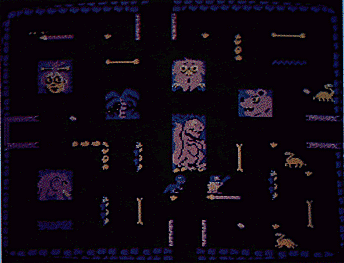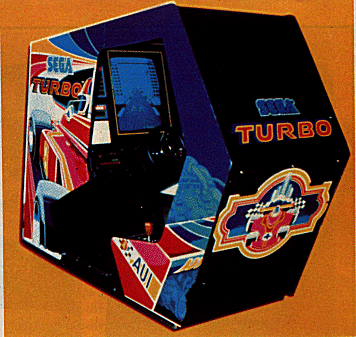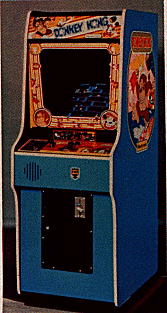| blue-illuminated joystick and strong cabinet artwork, Bally's
game dared to imitate art, bringing big-screen graphic |
action down to coin-op size via some pretty faithful
recreations of Disney's landmark film creation. But despite |
all the media attention, Tron never generated the cult
following that had been anticipated. |
|
Pinball Goes
Through Changes
| Pinball
as we once knew it went through some serious changes in '82. Factory production was
reduced drastically and earnings dropped to about $100 per machine (compared to $200 for
each video). Any doubt about the manufacturer' predicament was eliminated when Stern
closed its pin operations during the summer after 50 years. Meanwhile, Williams, Bally,
and Gottlieb (and Stern, before it pulled the plug) went to extremes to keep flipper
fingers alive. Here are some of the highlights:
- Gottlieb's Caveman - pinball meets video head-on. To some, it was the worst of
both worlds; to others, a true and captivating innovation.
- William's Varkon - pinball disguised in a video cabinet. It never did catch on,
though Williams deserves credit for trying to broaden the scope of the
|
basic pinball playfield components.
- Bally's Rapid Fire - video disguised in a pinball cabinet. Borrowing heavily from
William's Hyperball, it had a duel trigger mechanism that fired out a steady barrage of mini
ball bearings at a variety of targets and oncoming lights. What seemed a novel gun game
for the '80s generated
|
little enthusiasm. Plans to develop more of its kind
were temporarily, if not permanently, abandoned.
- Stern's Orbitor 1 - pinball for those with strong stomachs only. Its molded,
undulating playfield left many players more dizzy than satisfied. The game, Stern's swan
song, quickly faded from view, as did Stern.
-R.C.S. |

Pinball met video head-on in Gottlieb's Caveman. |
|
|
|
Overall, 1982 was a relatively "soft" year for the
coin-op industry. Some insiders were quick to blame the economy but others argued
that in a business that should be "recession-proof" the real culprit was
game-motif duplication. There is probably some truth in both these views. But
one thing is certain: It didn't help that an increasing number of arcades began
boasting multiples of a given model (eight Zaxxon or 12 Pac-Mans-that sometimes translated
into 30 or 40 percent of the games available on a floor). Often, the traffic didn't
exist to support this glut. Perhaps what is needed-if the industry wants earnings to
rise again next year-is something like what I mentioned earlier: more realistic gameplay.
There is no doubt that the technology exists to create this. The question is:
Will the fathers of the industry go back to taking the kinds of risks that have catapulted
video games to America's top form of leisure-time entertainment or largely continue to
hide behind its accomplishments of the past three years? Hopefully we'll find out in
1983. |




